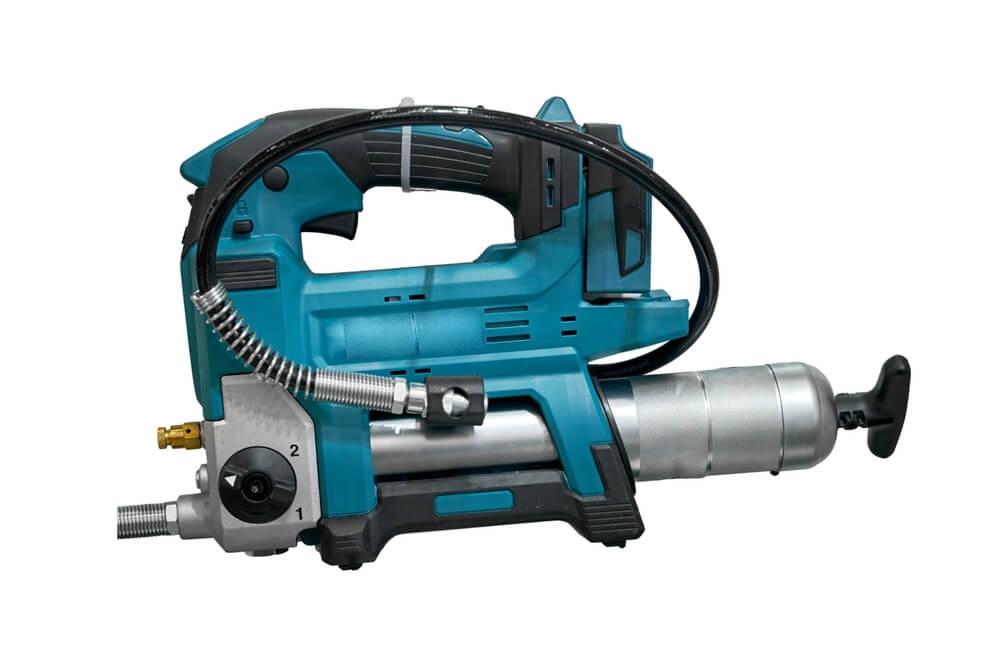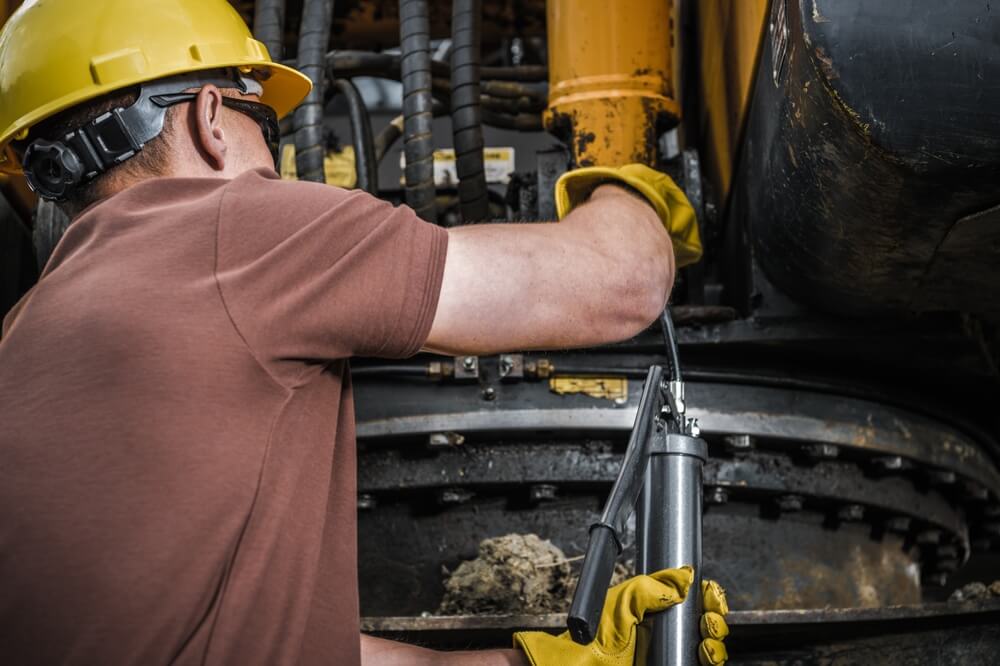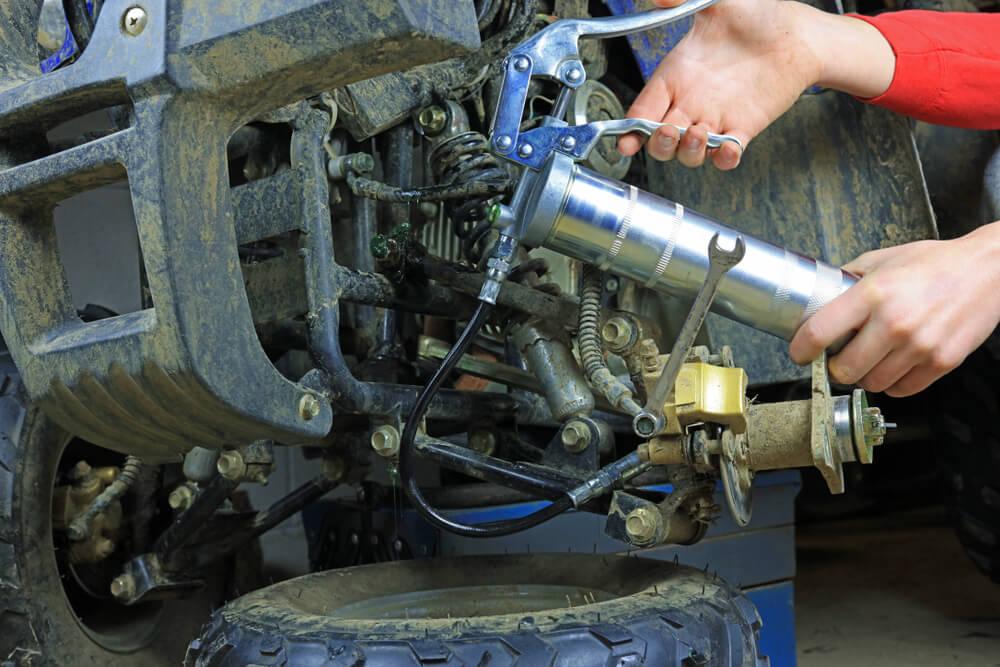From industrial facilities and farms to manufacturers, warehouses, and countless other industries, heavy machinery forms the backbone of daily operations. These machines are constantly moving, but that movement creates friction and wear between their components.
Lubrication is essential to reduce this wear and tear, extending the lifespan of the equipment. However, many critical components are small or hard to reach, posing a challenge to maintenance technicians.
Choosing the right lubricant for bearings and other equipment is critical to extending service life. The two main options for lubrication are grease and oil. Oil is best used for components that experience intense friction and for high-speed applications.
Grease is thicker and lasts longer than oil, and is the better choice for hard-to-reach components. It is more effective for leakage control, and it also acts as a sealant against contaminants and debris, catching dust before it reaches critical components.
Grease needs to be applied in optimum amounts to provide enough lubrication. Under-greasing will starve the machinery of the lubrication it needs, creating excess heat and wear on parts. Over-greasing, however, can damage seals and motor windings and cause environmental issues. It can also cause fluid friction, which will lead to increased heat and higher energy consumption.
The solution to exact grease extrusion in difficult-to-reach places is a grease gun. In this article, we will discuss what a grease gun is, the different types, how they work, its components, and where grease guns are used.
What Is a Grease Gun?
A grease gun is a common lubrication tool used to precisely place a specific amount of grease in a hard-to-reach location. It is important not to over- or under-grease machinery, so precise application on a timely basis is essential.
What Are the Main Types of Grease Guns?
Grease guns are made and sold in a variety of sizes and configurations. Here are four of the most common configurations:
- Lever Grease Guns: A simple pressure trigger mechanism allows the user to force out a controlled amount of grease with the physical force of pulling the lever.
- Hand Pump Grease Guns: This grease gun configuration has a pressurized pump handle or piston to build up pressure within the gun. When the trigger mechanism is depressed, the pressure forces the lubrication through the nozzle.
- Pneumatic Grease Guns: These air-powered grease guns are attached to a compressor, which uses air pressure to power the grease gun.
- Battery-Powered Grease Guns: As the name implies, batteries are used to power the grease expulsion, which makes using the gun easier and faster. These are also known as an electric or cordless grease gun.
Each grease gun requires some practice so the technician knows exactly how much grease is extruded and can deliver precise lubrication to bearings.
Lever and hand pump grease guns are sometimes also referred to as manual grease guns because they rely on manual power to operate.
Pneumatic and battery-powered grease guns are sometimes referred to as “automatic” grease guns since they do not require manual power. They can be easier to operate and are recommended if your facility requires significant or frequent grease applications.

If you are interested in buying a professional grease gun, take a look at our Grease Gun Buying Guide.
How Grease Guns Work
A grease gun has a lever trigger system, along with a barrel and nozzle that gives rise to the name “grease gun.” Automated grease guns have a small trigger level for easier use, which has given rise to terms like “pistol-style” grease guns.
Most types of grease guns have the standard identifiable features of a trigger, barrel, hose, and nozzle, despite there being a number of different models and formats, which makes them easy to identify as grease guns.
A grease gun nozzle may be a fixed metal piece, or it may be a flexible hose. The hose attachment makes it easier to reach deep interior grease fittings, while the fixed piece is handy for manual grease guns, which may need two hands to operate.
Facilities often have multiple grease guns, as different equipment requires different types of grease with different frequencies, and cross-contamination between grease (mixing two different types of grease) can damage the equipment it is lubricating.
Perform a field grease analysis to determine if the grease has been contaminated or needs to be changed.
Grease Gun Fittings
Most equipment requiring lubrication via a grease gun have grease fittings, also known as grease nipples, Zerk fittings, or Alemite fittings, which are located on the body of the equipment.
A grease fitting is a small metal fixture that sits on the grease hole and functions as a valve cap, and it is the point of contact between the equipment and your grease gun.
There are a number of different formats for grease fittings. The most prevalent is a convex shape that fits snugly against the concave surface of a grease gun nozzle. Grease gun nozzle kits are widely available and allow technicians to swap nozzles as needed for different equipment.
Where Are Grease Guns Used?
Grease guns allow precise grease delivery to machinery components that may be difficult to reach. Grease guns are most commonly used on non-sealed bearings, which often need regular grease lubricating.


Grease guns are found across a wide range of industrial, agricultural, and automotive industries. Here are a few examples of when grease guns would be heavily used:
- Automotive maintenance
- Agricultural tractors and equipment
- Construction and other earth-moving equipment
- CNC machines and other manufacturing equipment
- Factory, plant, and processing equipment, such as conveyor belts and electric motors
If your maintenance team requires training on equipment maintenance and lubrication, IBT Industrial Solutions offers expert industrial equipment training. We also offer expert equipment maintenance services while you get your team up to speed.
Contact us today to learn more.





